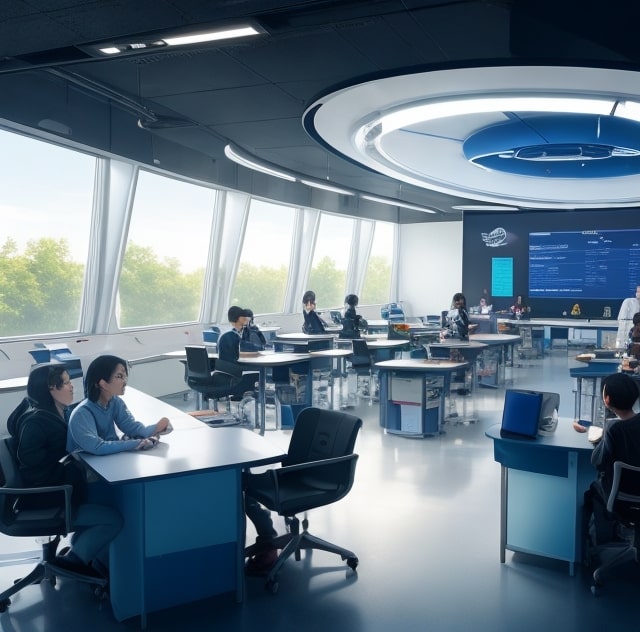The nature of employment is changing drastically in a world where rapid technological innovation and complicated global concerns are the norm. The competencies needed for success are changing as companies adjust to automation, artificial intelligence, and new forms of communication. Education, which is essential for both individual and societal development, is at a turning point. The conventional educational approach, which emphasized imparting information and skills for particular vocations, is changing to meet the demands of an uncertain future. How can education educate people to flourish in a world where professional pathways are less linear and more fluid than ever before? is the crucial question that arises.

With its emphasis on rote learning and rigorous testing, the traditional educational system was created to fulfill the demands of the industrial period. Graduates were expected to follow predetermined pathways and pursue lifetime professions in particular fields. However, this straight evolution has been hampered by the digital era. The workforce of today must contend with rapid technological change, shifting job responsibilities, and the requirement for ongoing skill development. This reality calls for a change in the emphasis of education—away from the dissemination of knowledge and toward the development of flexible skills and a growth mentality.
The understanding that the capacity to learn, unlearn, and relearn is crucial is at the core of this transformation. Fact memorization is no longer adequate. Instead, education should teach students how to collaborate, think critically, and solve problems. These abilities cut across sectors and job functions, enabling people to overcome complicated obstacles and embrace new opportunities.
The incorporation of technology is one noteworthy component of the changing educational scene. Due to the democratization of information access brought about by technology, students now have access to a wide range of resources outside of the traditional classroom. Individuals can create flexible learning routes that are adapted to their needs and interests using online courses, open educational resources, and interactive platforms. This not only creates a sense of control over one’s educational career but also supports lifelong learning.

Furthermore, new teaching techniques have been developed because to technology. Diverse learning styles and paces are accommodated by blended learning, which mixes in-person instruction with online resources. It is possible for virtual reality and augmented reality to produce immersive learning experiences that let students explore ideas outside of the constraints of textbooks. By bridging the gap between academic knowledge and practical applications, these technologies provide a deeper comprehension of subjects.
But the evolution of education goes beyond instructional strategies. The curriculum itself needs to change to meet future requirements. In order to recognize the value of creativity and communication in a technologically advanced environment, STEM (Science, Technology, Engineering, and Mathematics) education is expanding into STEAM (adding Arts) and even STREAM (adding Reading and Writing). This change acknowledges the fact that innovation frequently occurs where various fields converge.
Additionally, the importance of soft skills—often referred to as “21st-century skills”—in education is rising. Emotional intelligence, flexibility, resilience, cultural sensitivity, and successful communication are all included in these abilities. The capacity to empathize, connect with others, and negotiate complicated social dynamics becomes crucial when automation replaces ordinary activities. In order to develop these skills, educational institutions are starting to include projects, teamwork, and experiential learning opportunities.

Partnerships between educational institutions and businesses are increasingly important outside of the classroom. Programs like internships, apprenticeships, and mentorships help students make the transition from the classroom to the real world. These initiatives make ensuring that education is relevant to changing employment demands by exposing students to industry practices and issues. These partnerships also give educators knowledge that they may use to modify their curricula in accordance with market developments.
The development of education is not without difficulties, though. Both educators and students must adopt a new mentality in order to utilize new strategies. The complex abilities that students learn in these new models may not be adequately reflected by conventional success indicators like grades and test results. It is essential to adopt a larger definition of success—one that takes into account one’s capacity for change, adaptation, and ambiguity management.
Equity in education is a critical issue as well. All students should have access to the advantages of cutting-edge educational methods and resources, regardless of socioeconomic status. Policy modifications, financial investments in digital infrastructure, and community involvement are all necessary to address issue.

In summary, the evolution of education is a critical reaction to the shifting nature of employment and professional needs. People are empowered to succeed in a world characterized by unpredictability and technological disruption as a result of the shift from a knowledge-centric strategy to a skill-based, adaptable model. Beyond educating students for certain vocations, education fosters the capacity to learn, adapt, and actively participate in a changing society. The emphasis turns away from a typical conveyor belt of knowledge and toward a lifelong path of inquiry, growth, and resilience as educators, policymakers, and stakeholders work together to rethink the goal and scope of education. The evolution of education aims to enable people to determine the future rather than merely preparing them for it.
